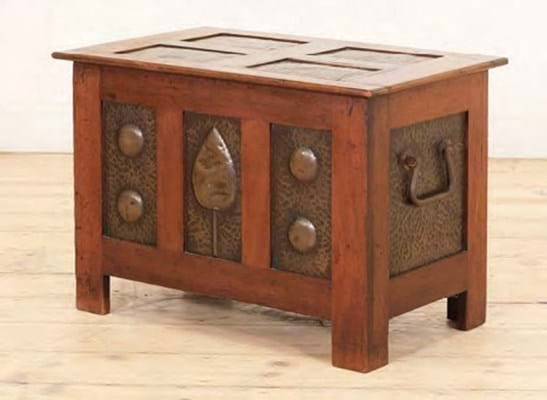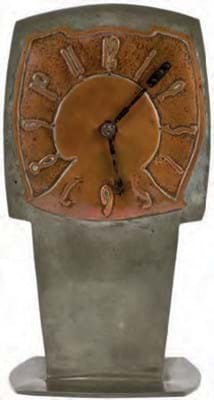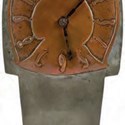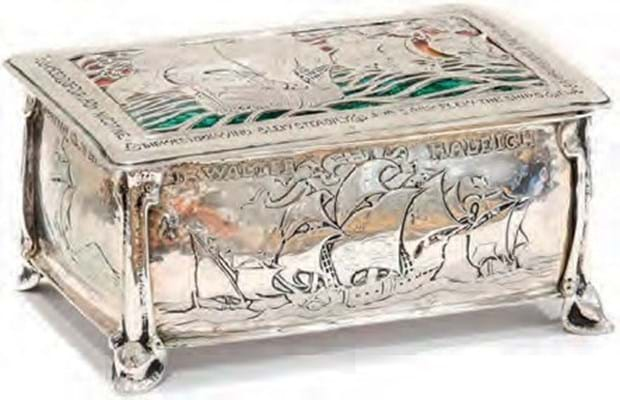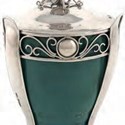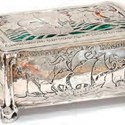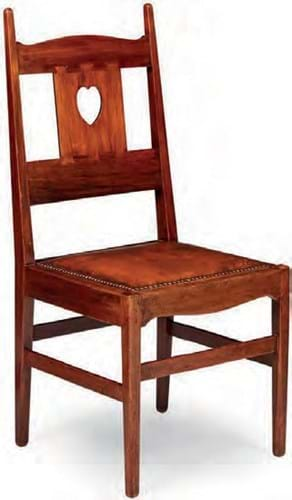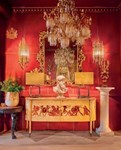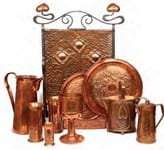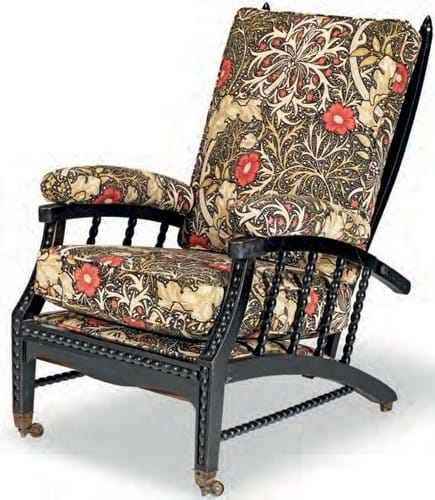
Ebonised ‘Morris’ reclining armchair designed by Philip Speakman Webb. Formerly in the possession of EM Forster, £14,000 at Bonhams, November 2022.
Well-made, functional, decorative and not overly fussy – the perfect blueprint for a piece of furniture, you would have thought.
And indeed it was for the pioneers of the Arts & Crafts movement in the late nineteenth century. The flat surfaces and clear lines that pervaded their output resulted from their principles of good design, construction and quality.
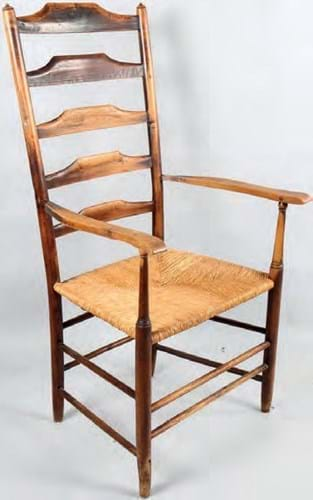
Ladderback armchair with rush seat, c.1890, by Philip Clissett (1817- 1913), £180 at Burstow & Hewett, January 2023.
Reacting against excessive ornamentation prevalent in other Victorian styles, this new approach was fuelled by a desire to revive traditional craftsmanship in simple forms. Its proponents were turning away from the rapid rise of industrial methods and factory production that, they felt, had not only brought about a reduction in quality, but also a preference for the overly elaborate.
When its biggest influencer, William Morris, founded the decorative arts firm Morris, Marshall, Faulkner & Company (later known as Morris & Co) in 1861, he recruited Dante Gabriel Rossetti, Ford Madox Brown and Edward Burne-Jones as artist-designers with the desire to raise design to the level of art. The company’s output went well beyond furniture to encompass fabrics, carpets and embroideries and so did the output of other participants as decorative art flourished.
At its roots, the Arts & Crafts movement celebrated a nostalgia for rural traditions. While it often found its clientele in urban centres such as London, Birmingham, Manchester and Glasgow, many of its proponents left the city to set up new workshops in areas such as Cornwall, the Cotswolds and the Lake District where they could live, work and enjoy the ‘simple’ life.
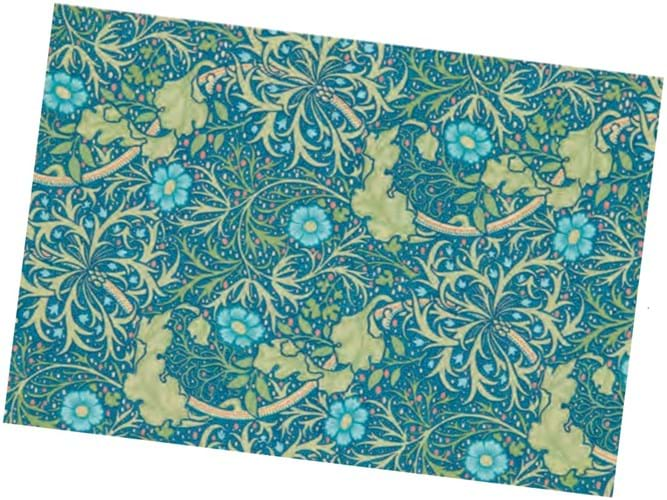
‘Seaweed’ wallpaper panel by John Henry Searle (1852-1932) for Morris & Co, c.1901, £340 at Lyon & Turnbull, June 2022.
Their ambitions went beyond the production of good quality items. Many of the protagonists in the movement had trained as architects. This led to them believing in designing objects as part of a total interior where furniture and decorations worked in harmony with the architecture and today you can still find examples of Arts & Crafts houses around the UK.
The ideas made their way across the Atlantic. In the US, architects such as Frank Lloyd Wright designed buildings in Arts & Crafts style. Furniture-maker Gustav Stickley ran a popular magazine, The Craftsman, in the early 1900s which encouraged readers to build, furnish, and decorate their own homes using Arts & Crafts principles. The magazine also provided free designs for Craftsman houses which inspired many bungalows that can still be found on the streets of America’s suburbs.
Of course, the stumbling block was the price.
Production methods used for Arts & Crafts items were simply too labour-intensive. The products created cost too much to be bought by the masses; the output became handcrafted collectable objects for the better-off - which they still are today. It is one of the great ironies that the Arts and Crafts ‘style’ achieved widespread popularity only when the designs were borrowed and reproduced using machines to press metal, cut timber and mould pots.
And for 21st century buyers – whether interior designers, collectors or visitors to auctions and dealerships looking for something unique to furnish their homes – Arts & Crafts designers did at least bequeath items of furniture and decorative art that have stood the test of time.
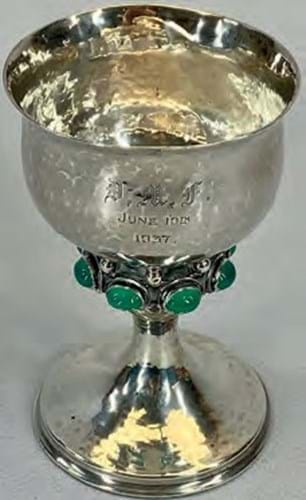
Beaten silver goblet, London 1910, by Ramsden & Carr, £1400 at Rogers Jones, January 2023.
Objects by the top names in good condition will typically attract good four-figure bids at auction – with the occasional item reaching five figures – whereas decent pieces ‘in the style of’ can be picked up for smaller tickets.
Arts & Crafts – a timeline
■ 1851 - The spark for the Arts & Crafts movement is ignited by The Great Exhibition held in London. Some criticised the manufactured objects on display for their overuse of unnecessary ornamentation with little concern for their utility.
■ 1853 - John Ruskin publishes the second volume of his influential The Stones of Venice, extolling the virtues of medieval craftsmen.
■ 1861 - William Morris founds the decorative arts firm Morris, Marshall, Faulkner & Co. (later Morris & Co) with a number of partners who also were to become influential Arts & Crafts designers. Morris lives by the creed: “Have nothing in your houses that you do not know to be useful or believe to be beautiful.”
■ 1875 - London department store Liberty & Co. is founded. The firm is a prominent retailer of Arts & Crafts goods.
■ 1884 - The Keswick School of Industrial Art (KSIA) is founded to provide metalwork and wood carving classes. By 1890 the school is exhibiting around the country and winning prizes.
■ 1887 - The Arts and Crafts Exhibition Society, which gave its name to the movement, is founded. Today it exists at the Society of Designer Craftsmen.
■ 1888 - The society holds its first exhibition in London, the same year that The Guild and School of Handicraft is founded by architect Charles Ashbee
■ 1896 - London County Council establishes the Central School of Arts & Crafts (today it’s the art college known as Central Saint Martins)
■ 1897 - The first American Arts & Crafts Exhibition is held in Boston, leading to the creation of the Society of Arts & Crafts.
■ 1920s - The movement fizzles out as Art Deco and then Modernism take hold.
Collections
■ The William Morris collection at the V&A in South Kensington.
vam.ac.uk/collections/william-morris
■ Wiliam Morris Gallery, Walthamstow the childhood home of Morris and the only museum dedicated solely to his work.
■ Blackwell, Windermere Designed by Hugh Baille Scott, almost all of Blackwell’s original features survive.
lakelandarts.org.uk/blackwell/
■ Red House, Bexleyheath Iconic Arts & Crafts home of William and Jane Morris and the centre of the Pre-Raphaelite circle.
nationaltrust.org.uk/red-house
■ The Wilson, Cheltenham Home to Cheltenham’s Arts & Crafts collection, the museum began buying work in the 1930s.
■ Wightwick Manor, Wolverhampton Following an inspiring lecture by Oscar Wilde on ‘the House Beautiful’, Theodore Mander and his wife Flora decorated the entire house with Victorian art and design.
nationaltrust.org.uk/wightwick-manor
■ Standen, East Grinstead One of the few remaining grand Arts & Crafts country homes designed by Philip Webb, decorated with many Morris & Co furnishings.


